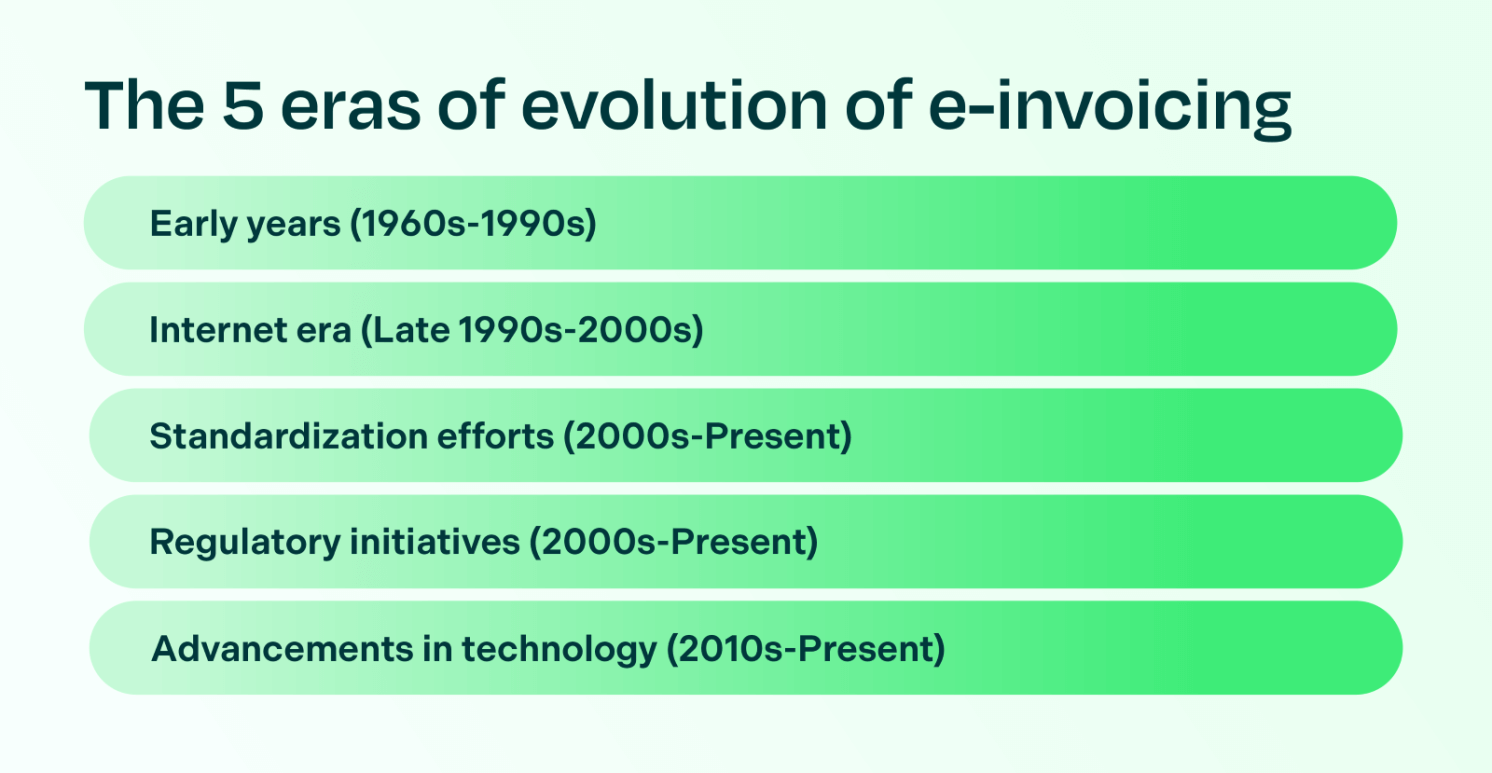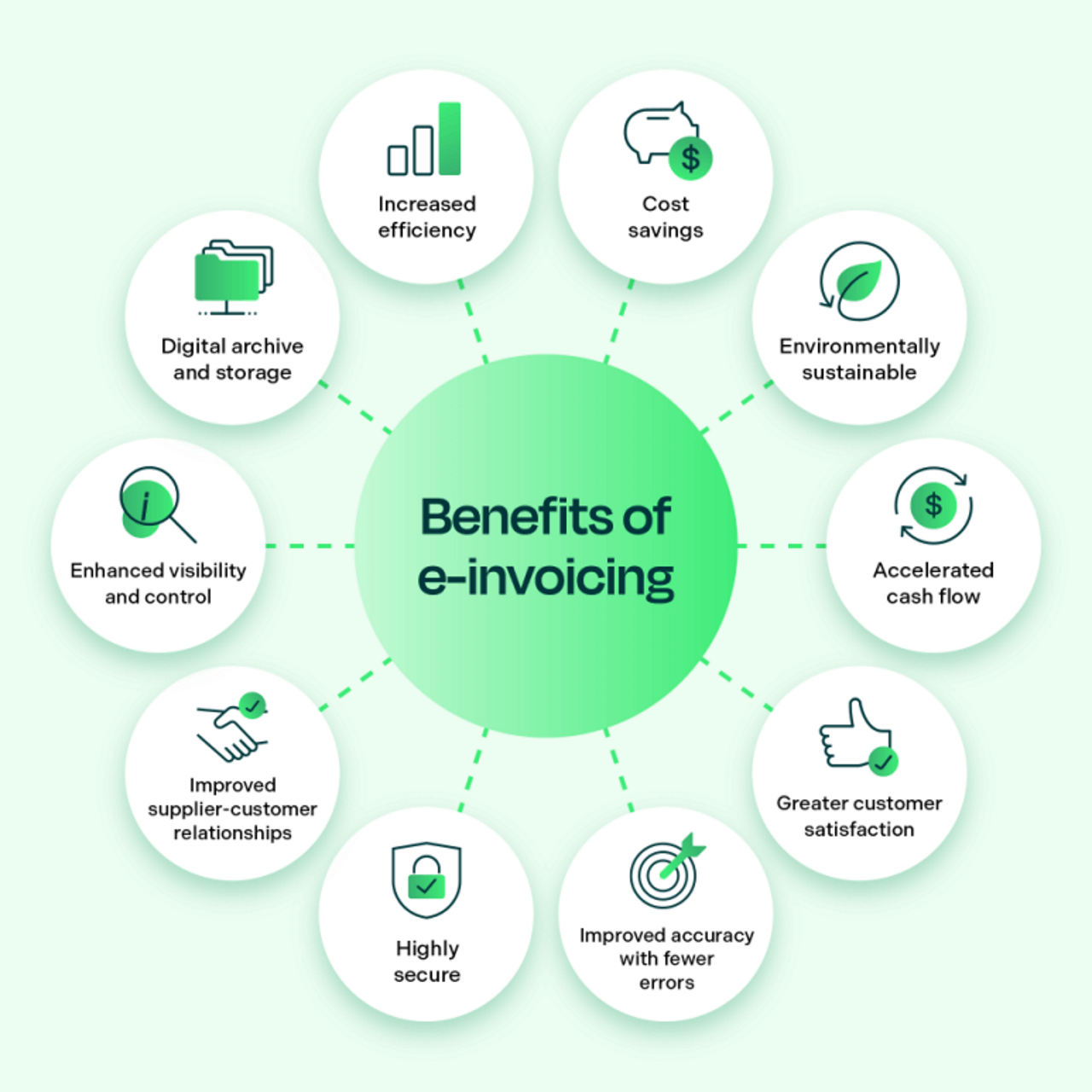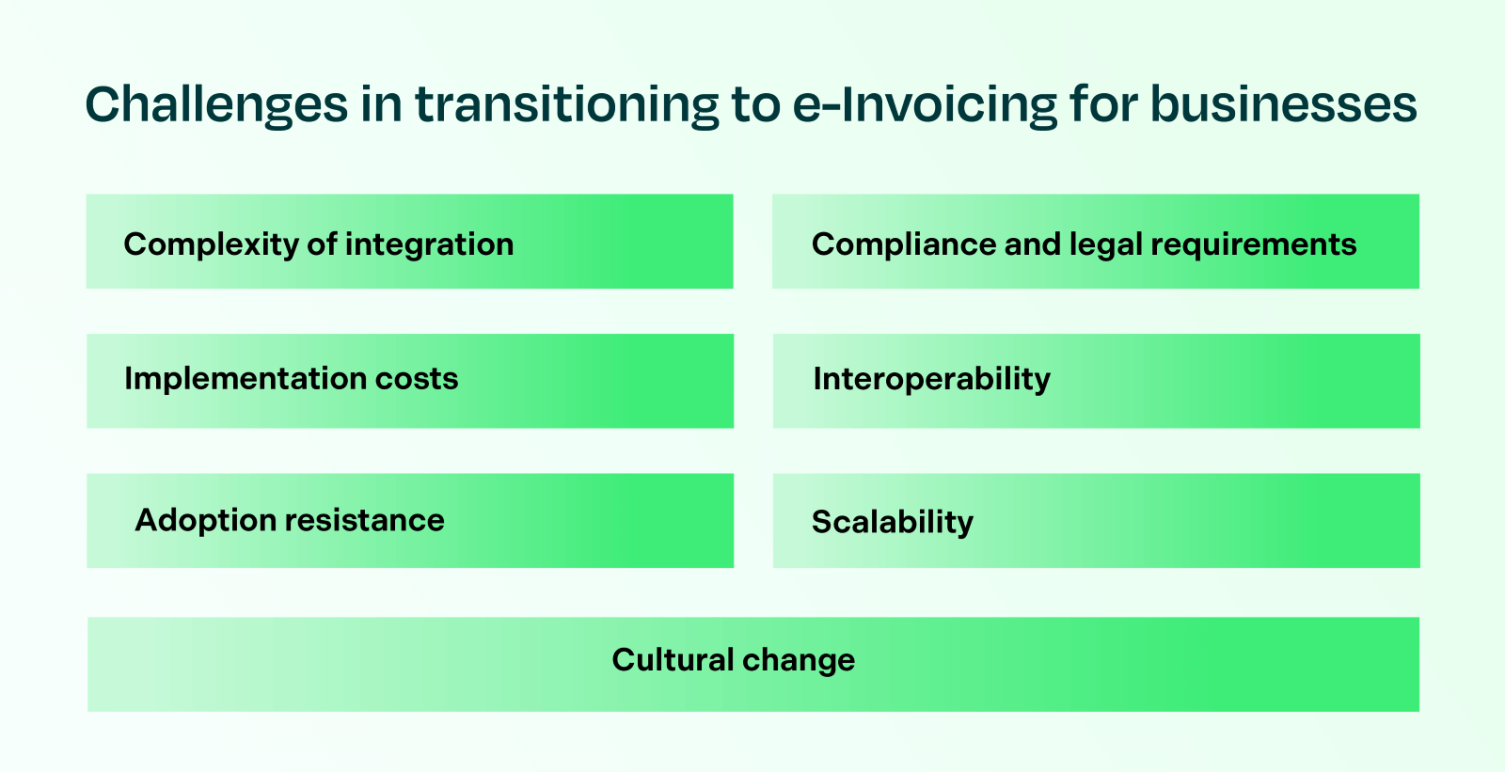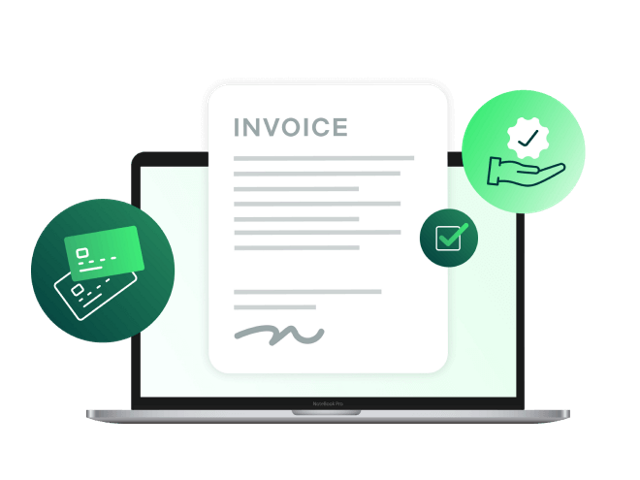This blog post was originally published on August 13, 2020, and was updated on April 25, 2024 with new sections on navigating the challenges of e-invoicing and choosing an e-invoicing solution.
In the bustling world of commerce, the almighty invoice acts as the lifeblood of business transactions. But gone are the days where reams of paper clattered from printers and fax machines, signaling a sale or purchase. Welcome to the era of e-invoicing, where convenience, accuracy, and speed reign supreme.
If you’re navigating the financial pathways of a company—whether you’re a fledgling finance professional, a seasoned CFO, or an AR manager looking to streamline operations—understanding e-invoicing is not just beneficial; it’s essential.
Download → 2025 Global eInvoicing Report [ Industry report ]
The importance of invoices
Let’s set the stage with the inevitability of documentation. When two companies enter into a trading agreement, documentation is required throughout the process to aid communication and ensure that terms and conditions are being met.
Think about invoices (bills), purchase orders, debit notes, credit notes, payment terms, instructions and remittance slips. These documents are to businesses what the mobile internet is to smartphones: indispensable. But manage these numerous documents in paper form, and you’re in for a Herculean task fraught with risks of errors and inefficiencies.
What is e-invoicing?
Electronic invoicing offers an alternative. It is the practice of transmitting transactional documents to trading partners electronically. The main document, the e-invoice, contains billing information in a structured format which allows for automated invoice processing. These e-invoices can be generated automatically by accounting software or ERP systems.
The primary feature of an electronic invoice is its focus on straight-through processing, distinguishing it from paper or PDF invoices – it recognizes the recipient of the invoice is not a human but a system, emphasizing its distinction.
E-invoicing has significant benefits for both suppliers and buyers including less manual effort and errors, a low cost per invoice, and faster invoice processing times. It facilitates the automation of supplier (order-to-cash) and buyer side processes (purchase-to-pay).
A glimpse into the past the evolution of e-invoicing
The rise of e-invoicing has been swift, marked by substantial innovation. Its inception dates back to the 1960s, with the use of EDI systems for information exchange. Nowadays, e-invoices reside in the cloud, employing contemporary structured formats like XML.
- Early years (1960s-1990s): It’s hard to imagine, but the quest for a paperless utopia began way back in the 1960s. Picture the vintage era of computing when pioneering companies took their first steps towards electronic data interchange (EDI) systems. While these systems laid the groundwork, they were clunky and bespoke—akin to trying to fit a square peg in a round hole with every new trading partner. The adoption of EDI was limited primarily to large enterprises with significant resources.
- Internet era (Late 1990s-2000s): As the internet became more widespread in the late 1990s and early 2000s, businesses started exploring web-based solutions for invoicing. This led to the development of various e-invoicing platforms and software applications that enabled businesses to create, send, and receive invoices electronically. These solutions offered greater accessibility and affordability compared to traditional EDI systems.
- Standardization efforts (2000s-Present): One of the key challenges in the early years of e-invoicing was the lack of standardization, which made it difficult for businesses to exchange invoices seamlessly across different systems. To address this issue, various organizations, including governments and industry associations, began developing standardized formats and protocols for e-invoicing. Examples include the creation of XML-based standards like Universal Business Language (UBL) and the development of interoperability frameworks such as PEPPOL (Pan-European Public Procurement Online).
- Regulatory initiatives (2000s-Present): Governments around the world have recognized the potential benefits of e-invoicing in terms of reducing administrative burdens, improving tax compliance, and combating fraud. As a result, many countries have introduced regulatory initiatives to promote the adoption of e-invoicing. These initiatives include mandates requiring certain businesses to use e-invoicing.
- Advancements in technology (2010s-Present): In recent years, advancements in technology, such as cloud computing, artificial intelligence, and blockchain, have further transformed the e-invoicing landscape. These technologies have enabled the development of more sophisticated e-invoicing solutions with features like automated invoice processing, real-time validation, and secure digital signatures.

How does the invoicing process operate today
Throughout its lifecycle, an invoice undergoes various stages and procedures before eventually being archived. Although the specific methods and levels of automation can differ greatly across organizations, industries, and geographical regions, a blend of legacy processes, automated systems, and hybrid approaches is commonly observed.
These processes typically fall into three categories:
- Legacy processes: These rely heavily on physical, paper-based invoices.
- Hybrid approaches: This middle ground often involves digitized paper, commonly in PDF format.
- Automated processes: These leverage electronic invoicing systems.
Legacy processes and hybrid approaches both fall under the umbrella of traditional invoicing. Transferring invoices between suppliers and buyers through these methods entails multiple steps. However, these manual processes are not just time-consuming but also susceptible to errors. The reliance on manual data entry introduces inaccuracies, demanding additional time for corrections. Furthermore, delays are often caused by human approval processes. Achieving automation, transparency, and visibility, including invoice and payment tracking, poses significant challenges within traditional invoicing practices.
Transitioning to automated processes leveraging e-invoicing systems eliminates many of the drawbacks associated with traditional invoicing. E-invoicing systems use digital networks to transmit invoices and associated documents from seller to buyer in an electronic format. This modern approach allows for quicker communication between trading partners, which speeds up the invoicing process significantly. Added to that are automating tasks such as invoice matching and routing.
What are the benefits of e-Invoicing?
E-invoicing is poised to become the darling of the financial world for evident reasons. It essentially boils down to saving time, money, and minimizing errors—resulting in quicker payments and streamlined workflows overall.
The beauty as a supplier, when presenting invoices electronically? You gain the ability to trace and quickly search through all current and past invoices, dial down on discrepancies, and sit back as customer service accolades roll in. And let’s not overlook the significant benefits of accelerated cash flow and reduced DSO – they are certainly not to be scoffed at. E-invoicing also unlocks automation opportunities for both accounts receivable and accounts payable processes, ensuring compliance with upcoming global regulations across multiple countries.
For buyers: Say hello to a less cluttered world where accessing any invoice is just a click away, eliminating the wait for paper invoices and saving numerous hours on data entry. Plus, managing payments has never been simpler.

Navigating the challenges of e-invoicing
No rose garden without thorns, right? Though e-invoicing has a lot of benefits, it also comes with its hurdles. Some businesses may find it challenging to completely transition to e-invoicing due to various reasons:
- Complexity of integration: Tailoring an ERP (Enterprise Resource Planning) or accounting system to generate all-singing, all-dancing electronic invoices or wrangling dozens of distinct accounts payable (AP) portals? It’s not every IT department’s cup of tea. Compatibility issues, data migration challenges, and customization needs can arise, requiring specialized expertise.
- Implementation costs: While e-invoicing can lead to long-term cost savings, the initial setup and integration with existing systems can be expensive. Businesses may need to invest in solutions and training to make the transition smoothly.
- Adoption resistance: Employees and customers may be resistant to change, preferring traditional invoicing methods. Getting customers on board with electronic acceptance can be another uphill climb.
- Compliance and legal requirements: E-invoicing regulations differ across countries and industries, posing a multifaceted compliance challenge. Invoices must adhere to a structured format and may require specific elements such as QR codes and digital signatures. Certain countries mandate the reporting of invoices to tax authorities.
- Interoperability: Ensuring that e-invoicing systems can communicate and exchange data seamlessly with trading partners using different platforms or standards can be a challenge.
- Scalability: As businesses grow and evolve, their e-invoicing needs may change. Ensuring that the chosen e-invoicing solution is scalable and can accommodate future growth is crucial.
- Cultural change: Transitioning to e-invoicing often requires a cultural shift within the organization. Emphasizing the benefits, addressing concerns, and fostering a mindset of continuous improvement are key to successful adoption.
While e-invoicing offers numerous benefits, it’s essential for businesses to be aware of these challenges and proactively address them to ensure a smooth transition and maximize the potential advantages. But with automation and the right solution in place, the climb becomes more of a gentle slope.

Preparing for e-invoicing
For companies with global ambitions, the shift towards e-invoicing is unmistakable and gaining traction. This transition is driven by a mix of factors, such as the increasing number of government regulations globally, the growing acceptance of digitalization in enterprises, and the heightened awareness of the benefits of e-invoicing.
Yet, the perceived intricacy of the process and the rising frequency of governmental directives worldwide might discourage some firms from embracing e-invoicing. However, relying on mandates to dictate adoption is a reactive and unstrategic approach. Instead, businesses should proactively adopt e-invoicing to reap the operational advantages, sharpen their competitive edge, and lead the way in this swiftly evolving digital terrain.
Prepare yourself for e-invoicing by taking the initiative to get ahead in the process.
Choosing an e-invoicing solution
When you are on the hunt for e-invoicing solutions or e-invoicing software, there are many things to consider.
Specifically ask yourself these questions:
- Are there analytics I can use for more insights and strategic decisions?
- How does it fit in my current order-to-cash cycle?
- How does it work together with the systems my buyers are using, such as accounts payable portals?
- What are the features you look for in e-invoicing software?
- Does it integrate well with my current ERP or accounting system, or a new one I intend to use?
- Does the e-invoicing system ensure compliance with invoicing and tax mandates on a global scale?
- Can the e-invoicing solution grow with my company that has a global footprint? Does it have multiple languages and currency support?
Wrapping up what is e-invoicing?
Now that we’ve unpacked the what, the why, and the how of e-invoicing, it’s clear why it stands out as a beacon of progress in the financial operations panorama. It beckons a future where transactions are lightning-fast, records are impeccably maintained, and stress is significantly reduced. The question isn’t whether you should adopt e-invoicing. It’s whether you can afford not to.
So, finance virtuosos, it’s time to bid adieu to piles of papers or other ways of traditional invoicing and embrace the digital tide. Step into the modern age of e-invoicing and watch as your financial processes are transformed.










